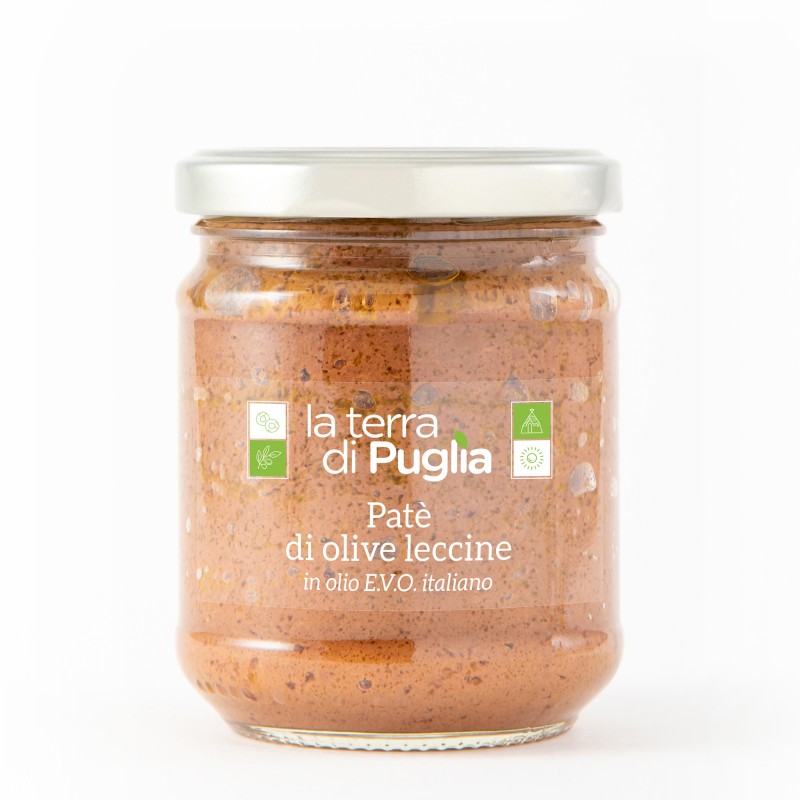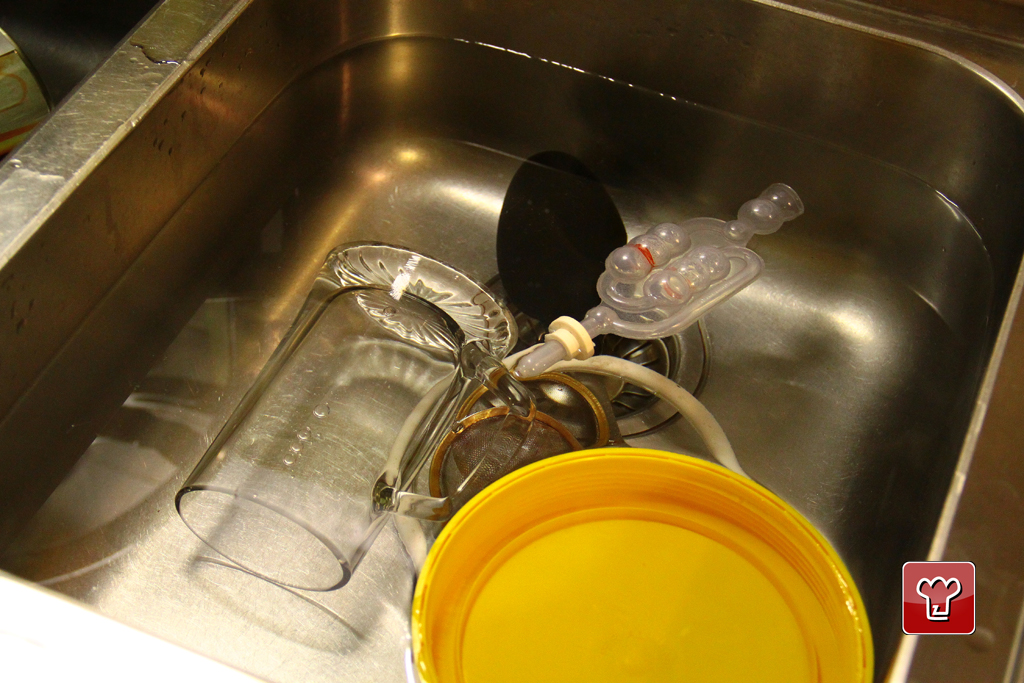Recipe for IPA beer
Ingredients
-
sugar 1000 grams
-
waterfall 23000 millilitres

Send the recipe
Preparation
When making beer you must sterilize everything you are going to use, plus the environment you’re working in, with a solution of water and bleach. Put the beer making kit to warm in hot water for 5 minutes, so that the contents are fluid. Open the beer making kit with a sterilized can opener. Pour the contents of the can into a pan together with about a litre of hot water. This is the concentrated must produced from malt instilled into water. Add a pound of sugar to the rehydrated must and slowly bring it to a boil. The product we are using is already ‘hoppy’, but we want to customize the beer a little by adding some Saaz hops to the last 15 minutes of boiling. Take half a mug of hot must water and add some ice, then add a sachet of freeze-dried yeast in order to activate it before putting it in the must. With a fine mesh strainer, strain the must whilst pouring it into the fermenter. Add the remaining litres of water up to 23 litres of rehydrated must. Add the starter yeast and must into the fermenter together with all its active foam. We wanted to personalize the beer further by adding a plug of hops to the must that remains to ferment for a week. This procedure is called Dry Hopping. Put the hops in a sterile gauze or container in the fermenter together with the must. Cover the fermenter with a lid and put the sterilised fermentation lock in its correct place. Then put the fermenter in a sheltered place at stable temperature that does not go below 10 ° C for a week and wait for it to finish the process of fermentation. After a week or so of fermentation you can proceed with the bottling. Wash and sterilize enough bottles for 23 litres of beer. Then very patiently bottle everything, filling the bottles to the top. Sterilize the bottle tops. Add to each bottle 1 teaspoon of sugar if the bottle is 500ml and about half a teaspoon if the bottle is 330ml. Sugar serves to reactivate fermentation for the second fermentation in the bottle, bringing the beer to saturation point with carbon dioxide and developing a little more alcohol. Add the caps to the bottles with the appropriate utensil just after adding the sugar. Allow the beer to mature in a cool place, sheltered from the sun, for two or three weeks. Here is the IPA ready, a very fragrant hoppy beer, with a bitter finish, and the typical amber colour in the English style.
Step by step
|
View the step by step

|
Put the beer making kit to warm in hot water for 5 minutes, so that the contents are fluid.
|
|
View the step by step

|
Open the beer making kit with a sterilized can opener.
|
|
View the step by step
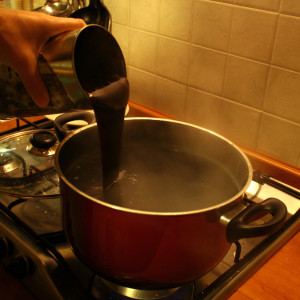
|
Pour the contents of the can into a pan together with about a litre of hot water. This is the concentrated must produced from malt instilled into water.
|
|
View the step by step
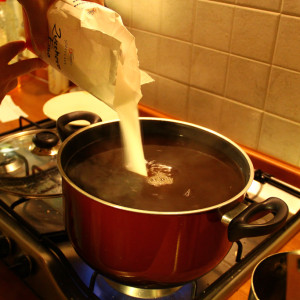
|
Add a pound of sugar to the rehydrated must and slowly bring it to a boil.
|
|
View the step by step
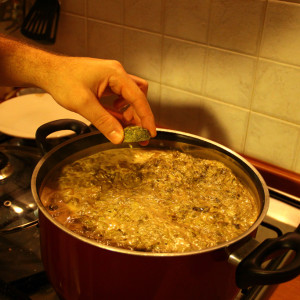
|
The product we are using is already ‘hoppy’, but we want to customize the beer a little by adding some Saaz hops to the last 15 minutes of boiling.
|
|
View the step by step
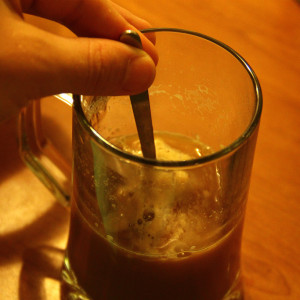
|
Take half a mug of hot must water and add some ice, then add a sachet of freeze-dried yeast in order to activate it before putting it in the must.
|
|
View the step by step
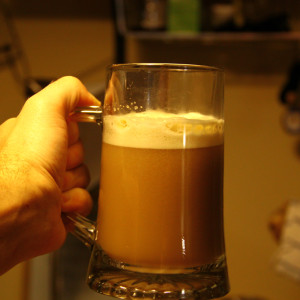
|
Here is the yeast and must that has started to foam! The yeast is activated after a few minutes.
|
|
View the step by step
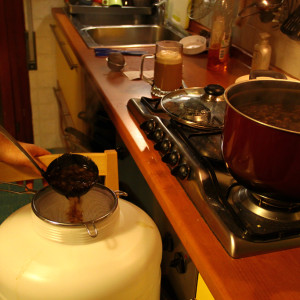
|
With a fine mesh strainer, strain the must whilst pouring it into the fermenter.
|
|
View the step by step
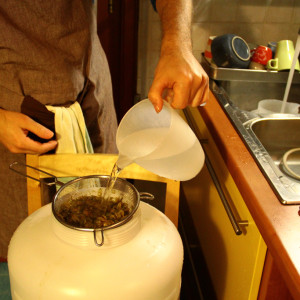
|
Add the remaining litres of water up to 23 litres of rehydrated must.
|
|
View the step by step
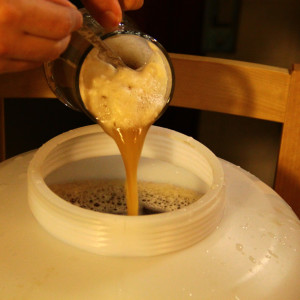
|
Add the starter yeast and must into the fermenter together with all its active foam.
|
|
View the step by step
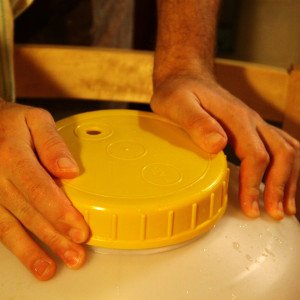
|
We wanted to personalize the beer further by adding a plug of hops to the must that remains to ferment for a week. This procedure is called Dry Hopping. Put the hops in a sterile gauze or container in the fermenter together with the must.
|
|
View the step by step
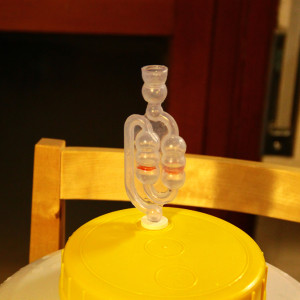
|
Cover the fermenter with a lid and put the sterilised fermentation lock in its correct place. Then put the fermenter in a sheltered place at stable temperature that does not go below 10 ° C for a week and wait for it to finish the process of fermentation.
|
|
View the step by step

|
After a week or so of fermentation you can proceed with the bottling. Wash and sterilize enough bottles for 23 litres of beer. Then very patiently bottle everything, filling the bottles to the top.
|
|
View the step by step
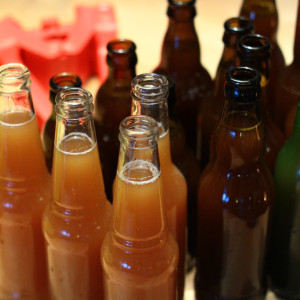
|
Here is how the bottles look filled with ‘fresh’ beer. The beer is still very cloudy and ‘alive’
|
|
View the step by step

|
Sterilize the caps.
|
|
View the step by step
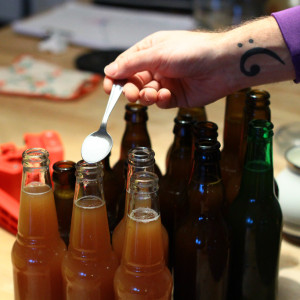
|
Add 1 teaspoon of sugar to each bottle if the bottle is 500ml and about half a teaspoon if the bottle is 330ml. Sugar serves to reactivate fermentation for the second fermentation in the bottle, bringing the beer to saturation point with carbon dioxide and developing a little more alcohol.
|
|
View the step by step

|
Add the caps to the bottles with a capping utensil just after adding the sugar.
|
|
View the step by step
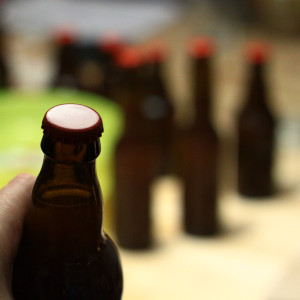
|
Allow the beer to mature in a cool place, sheltered from the sun, for two or three weeks.
|
|
View the step by step
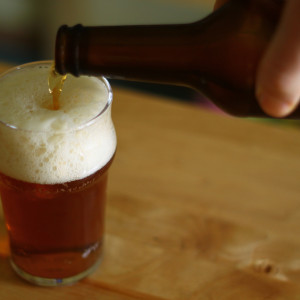
|
Here is the IPA ready, a very fragrant hoppy beer, with a bitter finish, and the typical amber colour in the English style.
|


